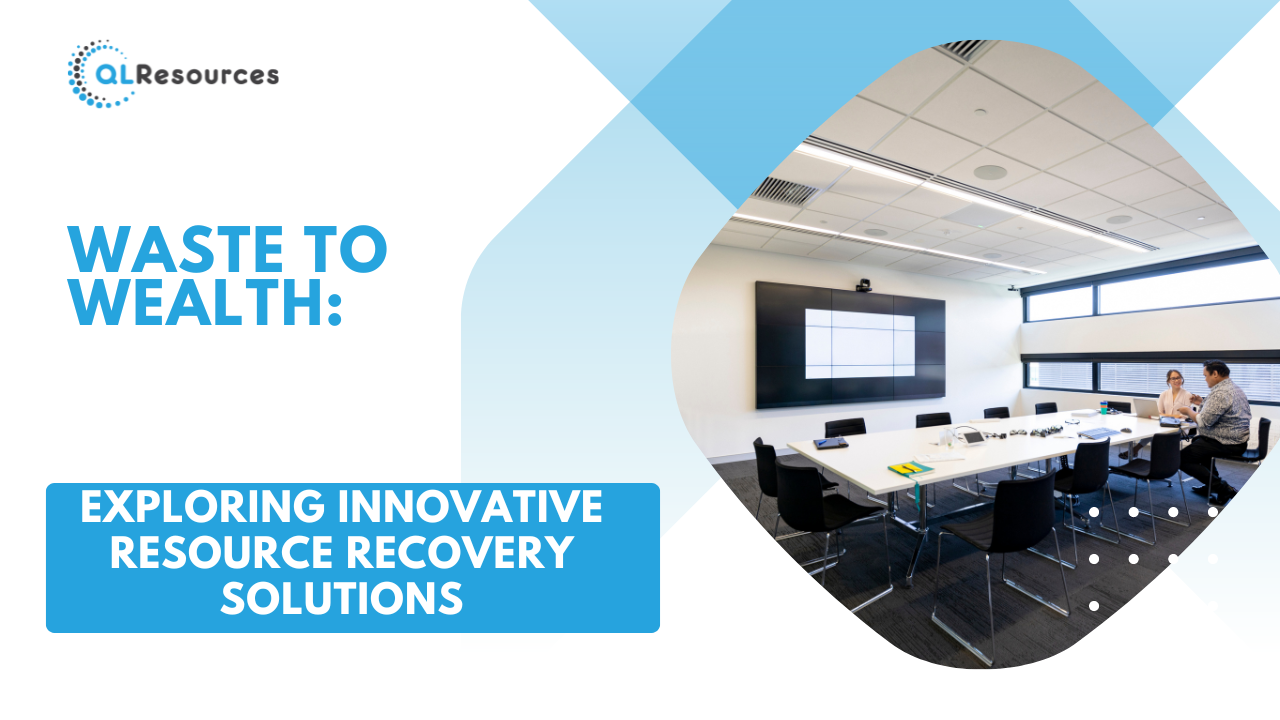
The concept of “waste to wealth” revolves around transforming waste materials into valuable resources through innovative recovery and recycling processes. This approach not only addresses environmental challenges associated with waste management but also creates economic opportunities and contributes to sustainable development. This article delves into various innovative resource recovery solutions that are turning waste into valuable assets.
1. Circular Economy Principles:
Embracing the circular economy model is fundamental to the waste to wealth concept. Instead of following a linear “take-make-dispose” approach, the circular economy emphasizes reducing waste generation, reusing materials, and recycling products to close the resource loop and minimise environmental impact.
2. Advanced Recycling Technologies:
a. Chemical Recycling: Technologies such as pyrolysis, gasification, and depolymerisation convert waste materials such as plastics, rubber, and biomass into fuels, chemicals, and feedstocks for manufacturing processes.
b. Biological Recycling: Composting, anaerobic digestion, and bioconversion methods utilise microorganisms to break down organic waste into compost, biogas, and biofertilisers, reducing landfill waste and generating renewable energy.
3. Electronic Waste (E-waste) Management:
E-waste contains valuable metals and components that can be recovered and reused. Innovative recycling techniques separate and extract metals like gold, silver, copper, and rare earth elements from electronic devices, contributing to resource conservation and reducing electronic pollution.
4. Plastic Waste Upcycling:
Innovative companies are developing technologies to upcycle plastic waste into new products with higher value. This includes transforming plastic bottles into textiles, creating building materials from recycled plastics, and incorporating recycled plastics into manufacturing processes for consumer goods.
5. Waste Valorisation in Construction:
Construction and demolition waste can be valorised through techniques such as concrete recycling, where crushed concrete rubble is used as aggregate in new construction projects. This reduces the demand for virgin materials and minimises construction-related waste.
6. Food Waste Recovery:
Technologies like anaerobic digestion can convert food waste into biogas and organic fertilisers. Food waste recovery not only reduces methane emissions from landfills but also generates renewable energy and nutrient-rich products for agriculture.
7. Mining Waste Recovery:
Mining operations generate tailings and waste streams containing valuable minerals. Through advanced processing techniques and resource recovery technologies, companies can extract and recover metals and minerals from mining waste, reducing environmental footprint and maximising resource utilisation.
8. Collaborative Initiatives and Partnerships:
Collaboration between governments, industries, research institutions, and communities is essential for promoting waste to wealth initiatives. Public-private partnerships, innovation hubs, and knowledge sharing platforms can accelerate the adoption of innovative resource recovery solutions and foster a circular economy mindset.
Conclusion:
Innovative resource recovery solutions offer a promising pathway towards sustainable waste management and resource conservation. By adopting advanced recycling technologies, embracing circular economy principles, promoting collaboration, and investing in research and development, societies can unlock the potential of waste to wealth initiatives. These efforts not only contribute to environmental protection and waste reduction goals but also create new economic opportunities, promote innovation, and support the transition towards a more sustainable and resource-efficient future.